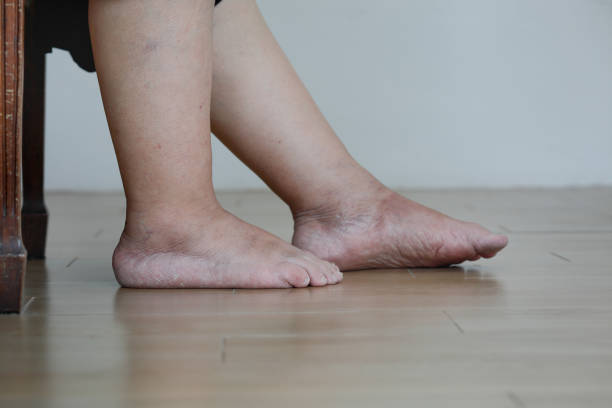Ankle swelling, also known as edema, is a common condition that occurs when fluid builds up in the ankles and feet. This can lead to discomfort, pain, and difficulty walking. If left untreated, ankle swelling can progress to more serious health issues, such as deep vein thrombosis or cellulitis. In this article, we will discuss the common symptoms of ankle swelling, as well as the treatment options available.
Symptoms of Ankle Swelling
The most common symptom of ankle swelling is a noticeable increase in the size of the ankle and foot. This can be accompanied by a feeling of tightness or discomfort in the affected area. Other symptoms may include:
Pain or tenderness in the ankle or foot
Redness or warmth to the touch
Discoloration of the skin
Difficulty walking or moving the affected limb
A feeling of heaviness or fatigue in the affected limb
These symptoms can vary in intensity and duration, depending on the underlying cause of the ankle swelling. In some cases, the swelling may be accompanied by other symptoms, such as fever, chills, or difficulty breathing.
Causes of Ankle Swelling
Ankle swelling can be caused by a variety of factors, including:
Injuries or trauma to the ankle or foot
Varicose veins
Deep vein thrombosis
Cellulitis
Lymphedema
Rheumatoid arthritis
Gout
Pregnancy
Obesity
Sitting or standing for long periods of time
Treatment for Ankle Swelling
The treatment for ankle swelling will depend on the underlying cause of the condition. In many cases, the swelling will resolve on its own with rest and elevation. However, in some cases, more aggressive treatment may be required.
Rest and Elevation: One of the most effective ways to reduce ankle swelling is to rest and elevate the affected limb. This can be done by lying down and elevating the foot on a pillow or by sitting with the foot raised on a stool or ottoman. This helps to reduce the pressure on the affected limb and allows the fluid to drain away.
Compression Stockings: Compression stockings are designed to provide gentle pressure on the affected limb. This helps to reduce the swelling and improve circulation. Compression stockings can be purchased over-the-counter or prescribed by a doctor.
Ice Therapy: Applying ice to the affected limb can help to reduce inflammation and pain. Ice should be applied for 20-30 minutes at a time, several times a day.
Medications: In some cases, medications may be prescribed to reduce inflammation and pain. These may include nonsteroidal anti-inflammatory drugs (NSAIDs) or corticosteroids.
Physical Therapy: Physical therapy can help to improve circulation, reduce inflammation, and alleviate pain. This may include exercises to improve range of motion and strength, as well as massage and other techniques to reduce swelling.
Surgery: In some cases, surgery may be required to address the underlying cause of the ankle swelling. This may include varicose vein surgery, deep vein thrombosis surgery, or lymphedema surgery.
Conclusion
Ankle swelling can be a frustrating and painful condition, but with the right treatment, it can be effectively managed. Rest and elevation, compression stockings, ice therapy, and medications can all be used to reduce inflammation and pain. In some cases, physical therapy or surgery may be necessary to address the underlying cause of the ankle swelling.

 Home
Home Health
Health Diet & Nutrition
Diet & Nutrition Living Well
Living Well More
More












